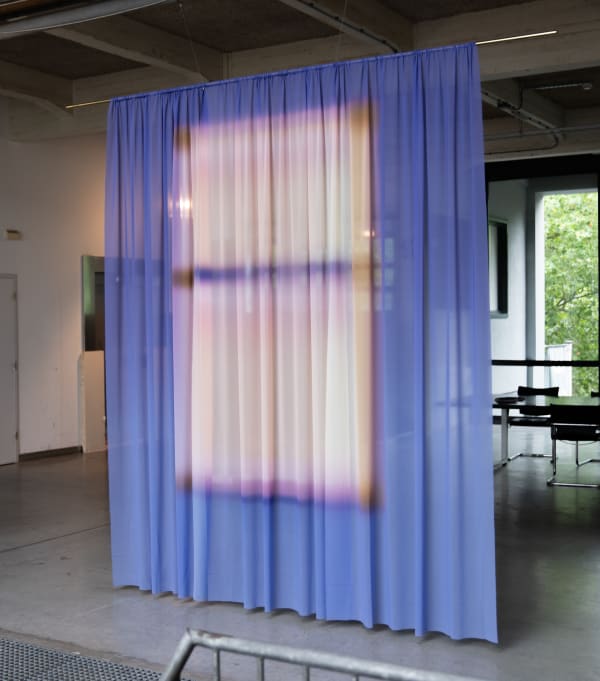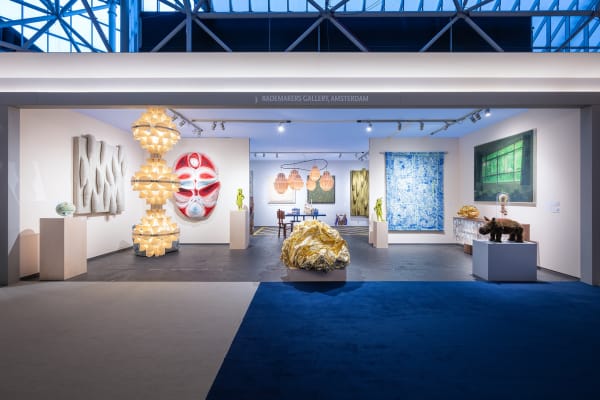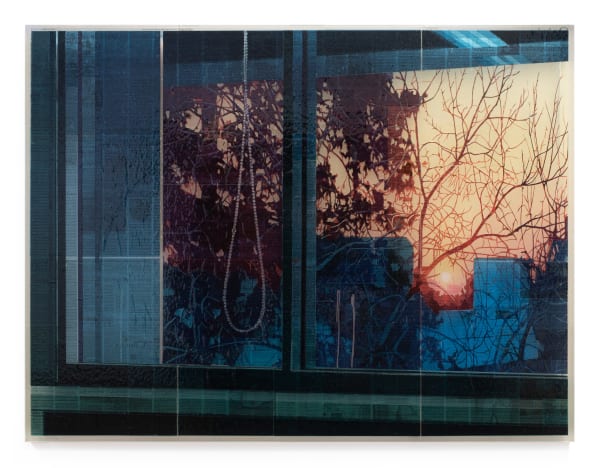Martijn Hesseling
Martijn Hesseling
Martijn Hesseling, a Dutch artist based in the Netherlands, creates intricate and multilayered compositions using an unconventional medium—newspaper and lacquer. His unique artistic process transforms these everyday materials into luminous, complex works of art that challenge traditional painting techniques and explore the passage of time.
A Layered Technique
Hesseling’s process begins with a clear sheet of plexiglass as his canvas. He meticulously cuts and lacquers individual fragments of newspaper, constructing his compositions from the back to the front. The result is a stunning blend of transparency and opacity. By lacquering the pieces, the negative spaces in the newspaper become transparent, while the printed text and images remain intact. The white space of the newspaper serves as highlights, while the printed portions create shadows, gradients, and color. This layering creates a distinctive depth and glow, as the wall behind the artwork becomes part of the composition, allowing light to emanate from within the piece.
Newspaper as a Reflection of Time
Hesseling’s choice to work with newspaper as a medium was inspired during his MFA studies in painting. Frustrated by the formality of paint, he sought a medium that could reflect the passage of time. Newspaper, with its fleeting nature and constant renewal, became a perfect metaphor. The text remains legible in his work, allowing viewers to engage with the artwork on multiple levels. As one moves closer, the larger composition dissolves into individual pieces of text and imagery, offering a narrative that unfolds in layers. The ability to both read and visually engage with the material adds a dynamic and thought-provoking dimension to his art.
Creating Depth and Glow
Hesseling’s works are celebrated for their unique visual depth, which is achieved by the interplay of transparency and opacity. The technique of building highlights from transparency allows the brightness and detail to emerge not from the surface, but from the space behind the artwork. This creates an almost ethereal glow, as if the piece is illuminated from within, further enhancing the sense of depth.
Education
- 1991–1996: AKI, Academy of Visual Arts, Enschede
- 1995–1997: Dutch Art Institute (AKI2), Enschede (Postgraduate)
Collections
- Deutsche Bank, London
- ING Bank
- Leaseplan
- Dresdner Bank
- AKZO Nobel
- Philips
- American Express
- Mitsubishi
- Icewatch
- DELA
-
 6:15 PM, 2025€ 10,000.00
6:15 PM, 2025€ 10,000.00 -
 Tabloid #16€ 3,500.00
Tabloid #16€ 3,500.00 -
 Tabloid #18€ 3,500.00
Tabloid #18€ 3,500.00 -
 Ghost€ 1,800.00
Ghost€ 1,800.00 -
 Ghost€ 1,800.00
Ghost€ 1,800.00 -
 Danny's Studio€ 14,000.00
Danny's Studio€ 14,000.00 -
 Apartment B € 14,000.00
Apartment B € 14,000.00 -
 Art Basel€ 5,000.00
Art Basel€ 5,000.00 -
 Stream€ 19,500.00
Stream€ 19,500.00 -
 Cave€ 15,000.00
Cave€ 15,000.00 -
 Debora€ 4,500.00
Debora€ 4,500.00 -
 John & Elay€ 4,500.00
John & Elay€ 4,500.00 -
 Cleo & Melaena€ 4,500.00
Cleo & Melaena€ 4,500.00 -
 The message€ 20,000.00
The message€ 20,000.00 -
 Tabloid #10€ 3,500.00
Tabloid #10€ 3,500.00 -
 Tabloid #23€ 3,500.00
Tabloid #23€ 3,500.00
-

Art Rotterdam 2026
26 - 29 Mar 2026Rademakers Gallery returns to Art Rotterdam in 2026, with a curated presentation, dedicated to the connection between movement, art and design. The collection explores the...Read more -

PAN Amsterdam 2025
Booth 3 1 - 9 Nov 2025PAN Amsterdam is the highlight of the year for Rademakers Gallery within the Dutch art fair landscape. We are proud to be returning in 2025,...Read more -

PAN Amsterdam 2024
24 Nov - 1 Dec 2024Seen on PAN Amsterdam 2024Read more


















